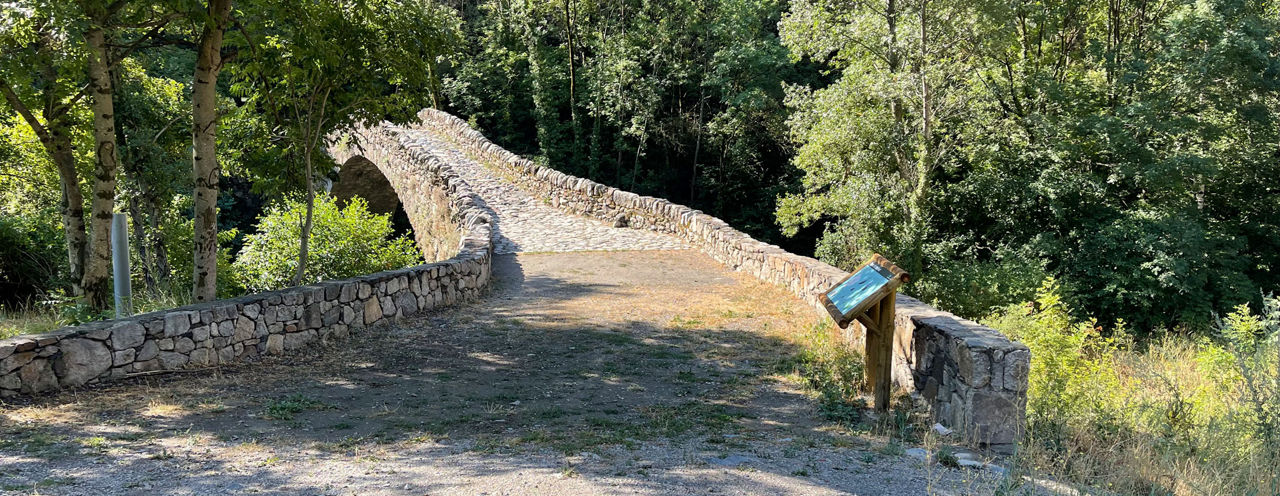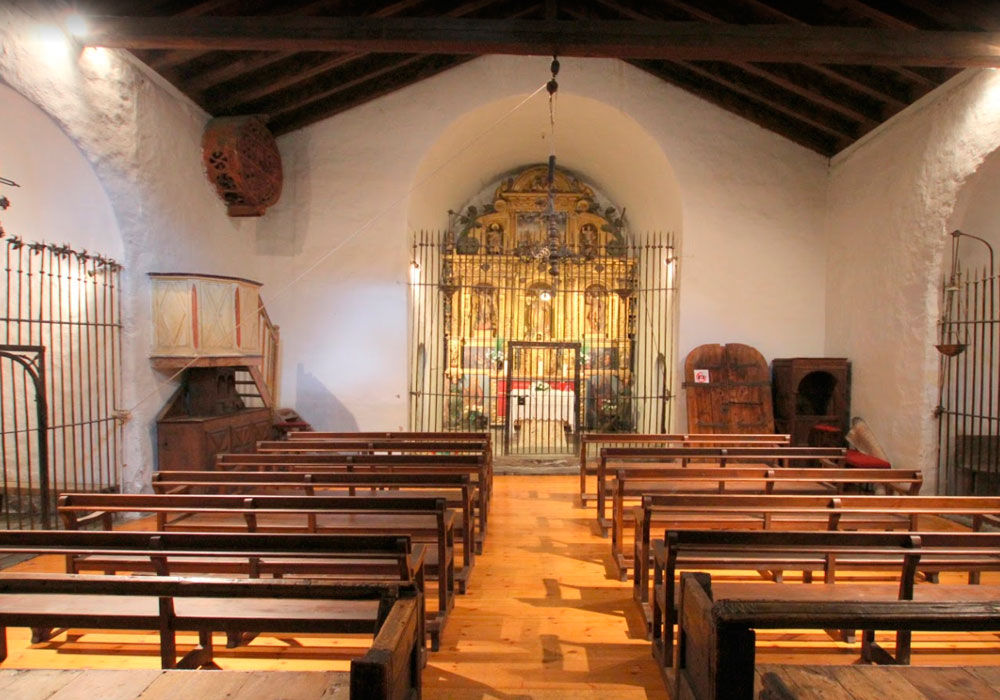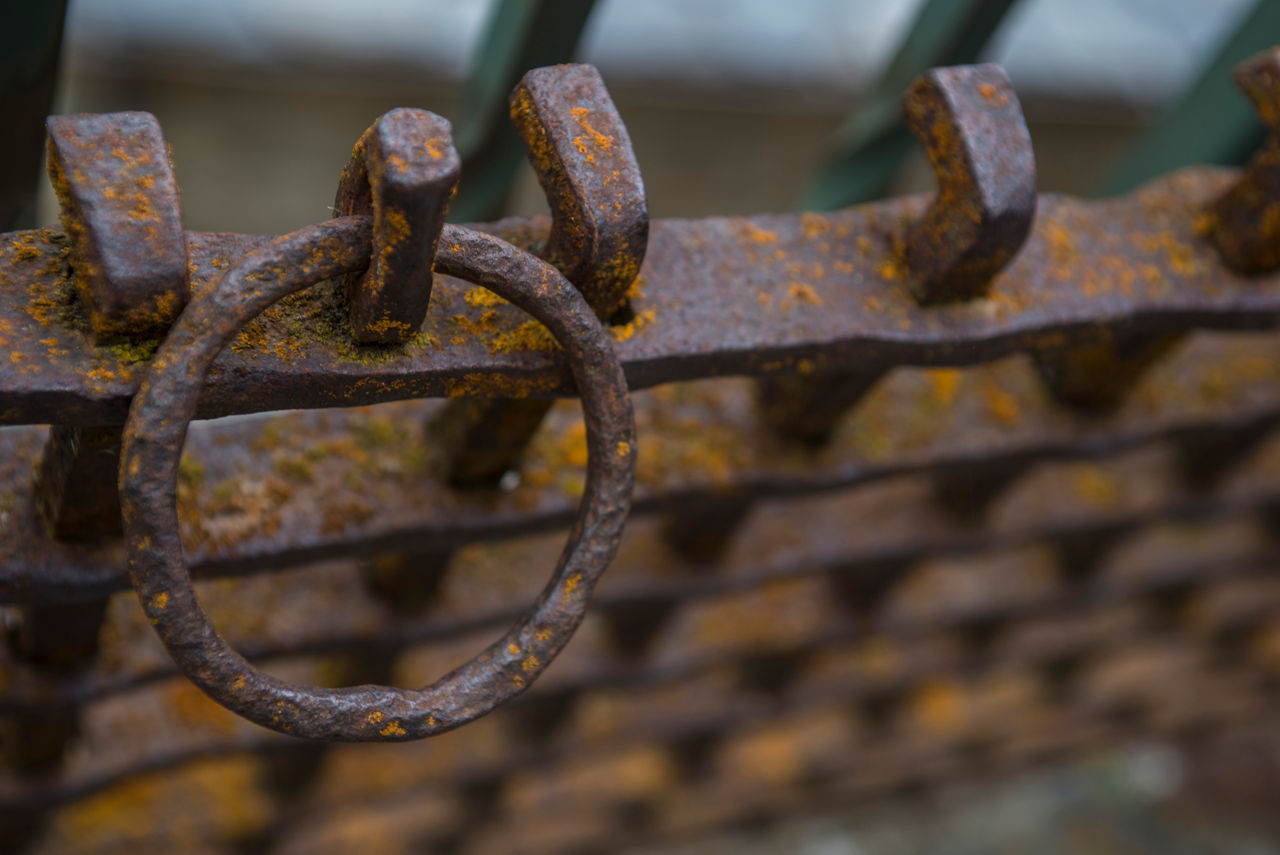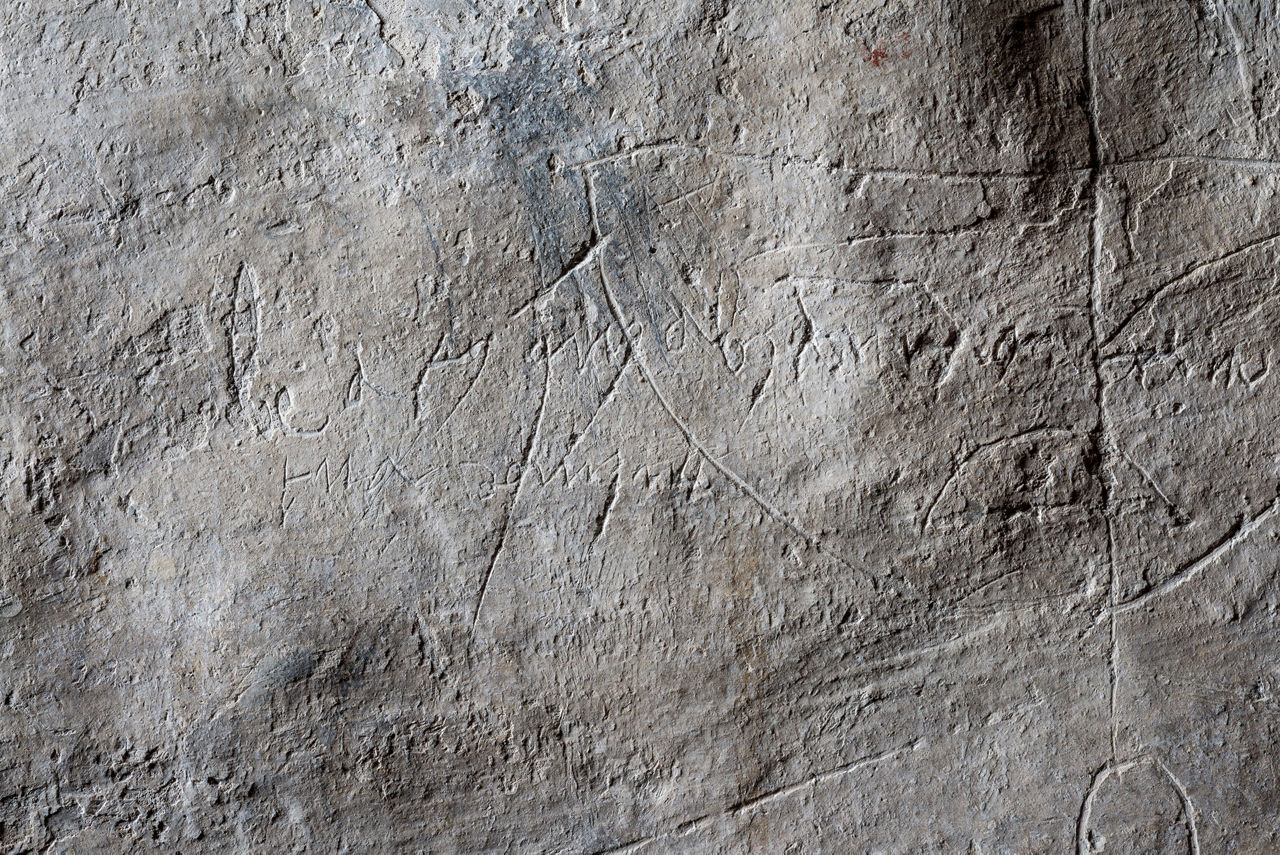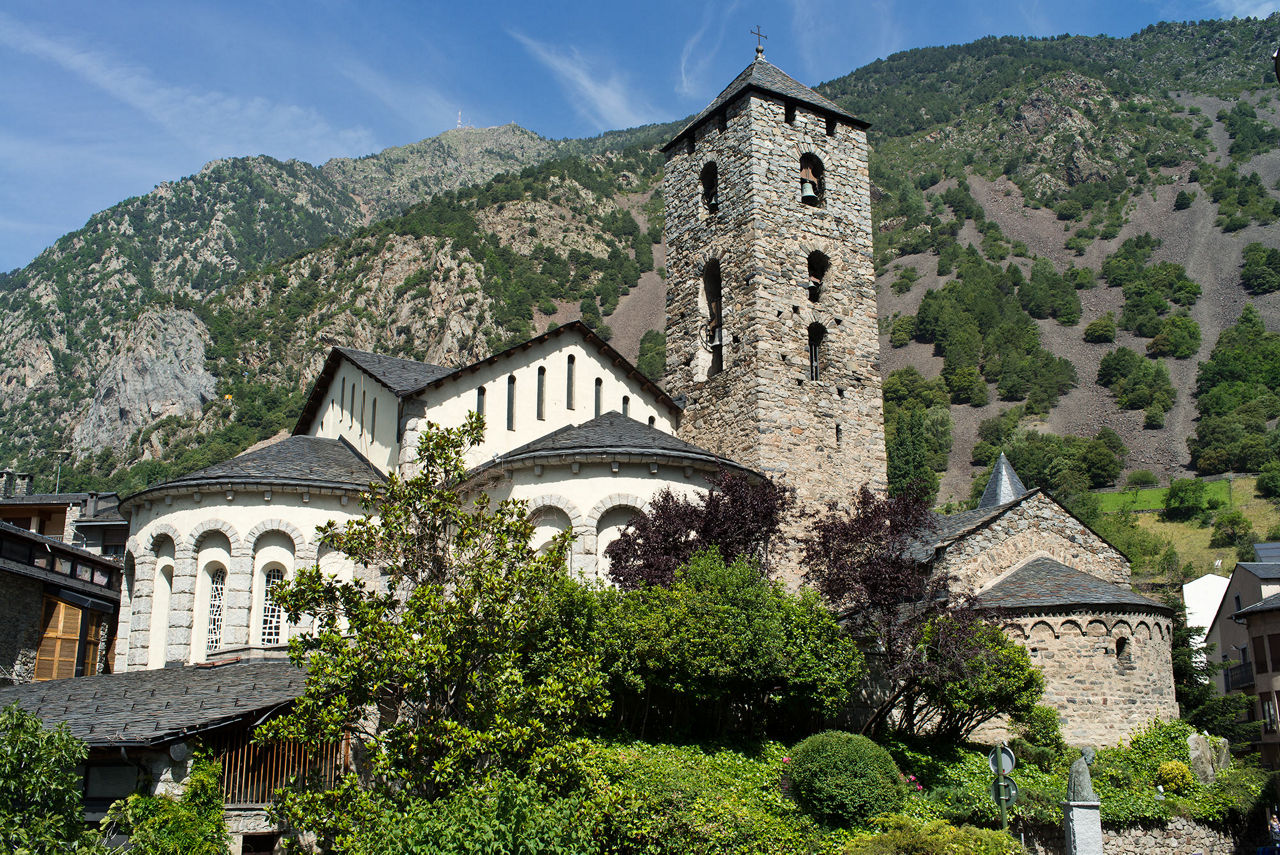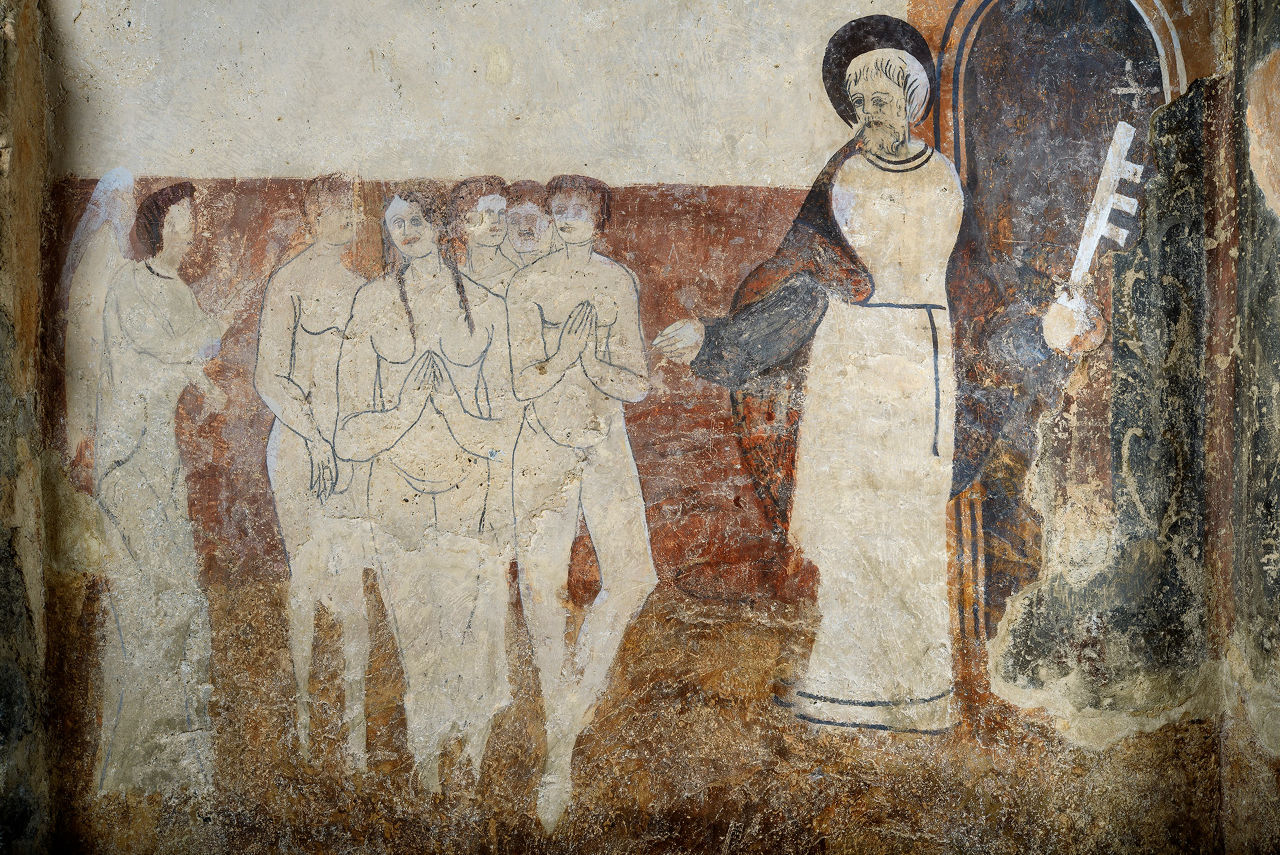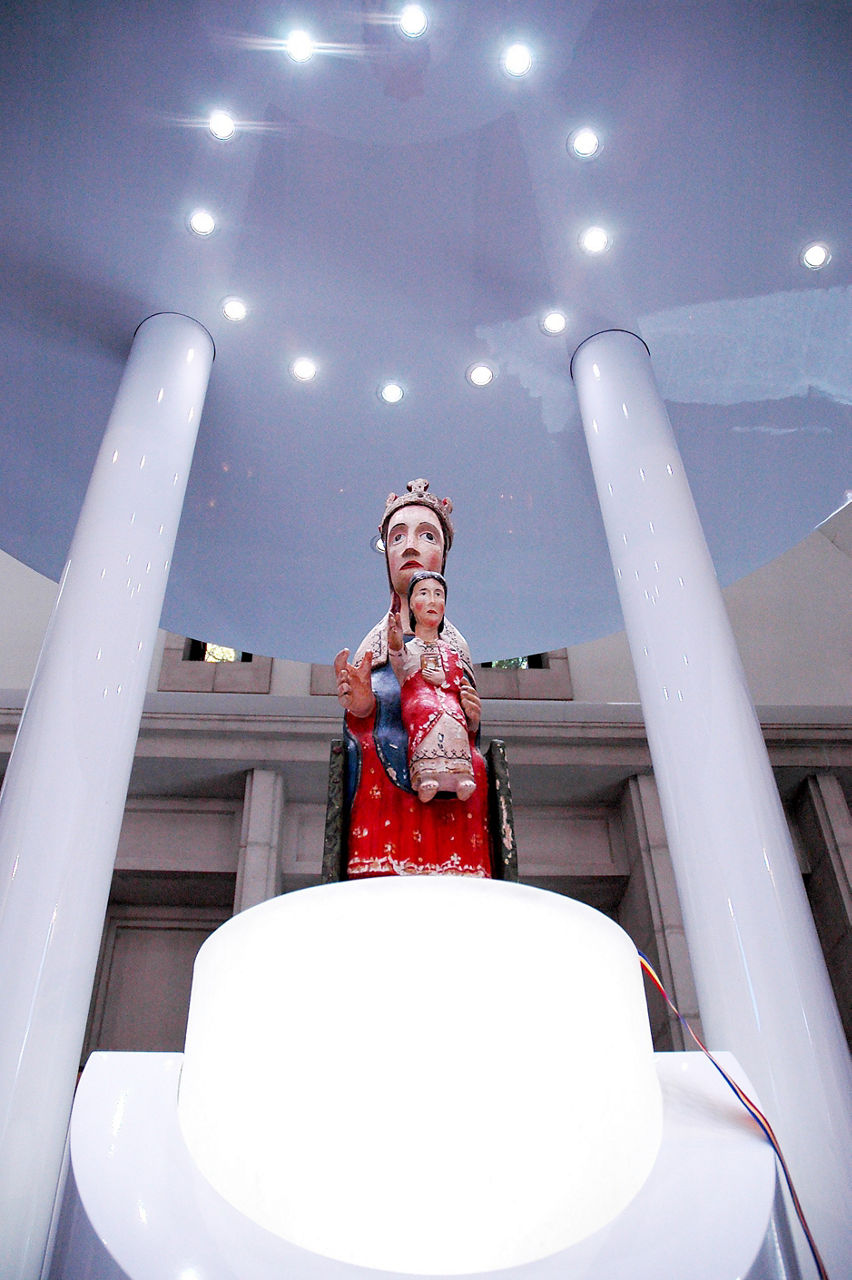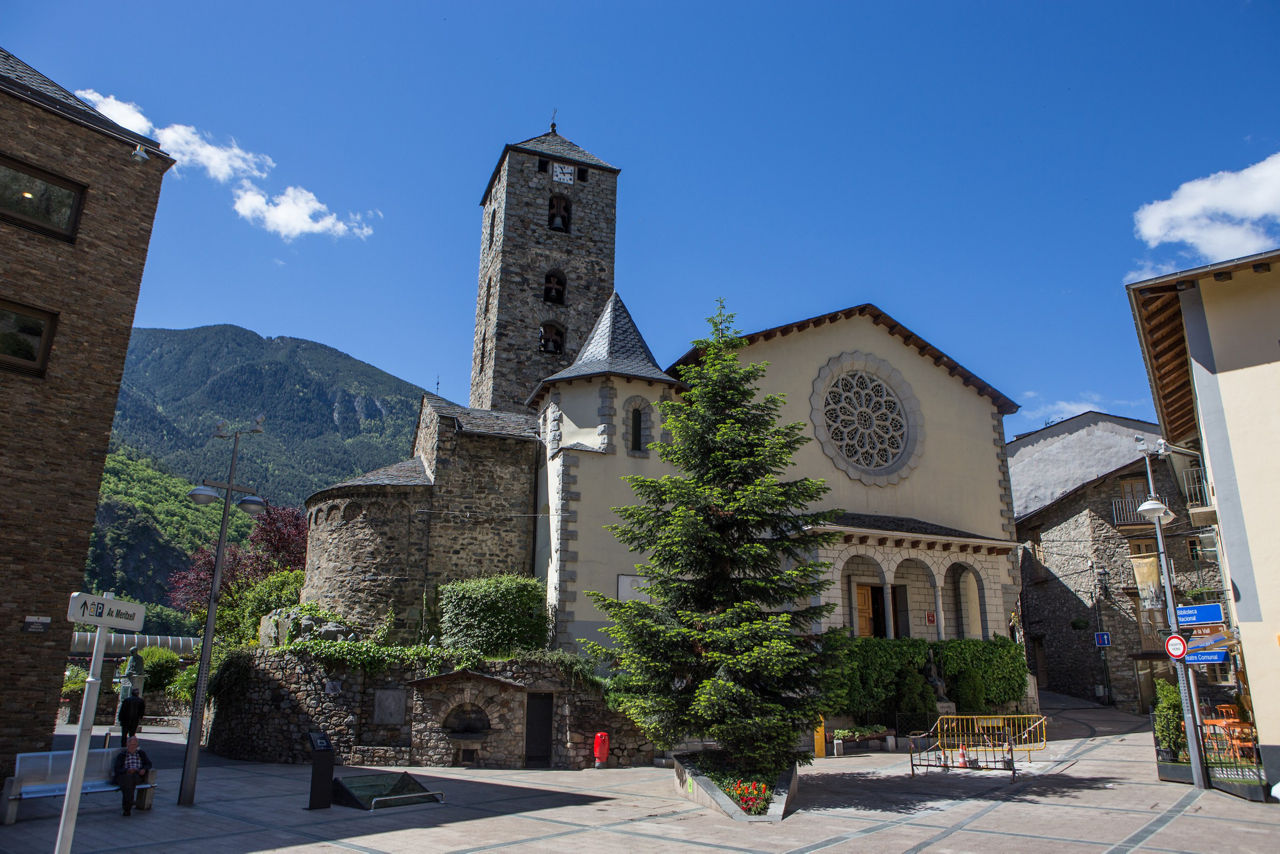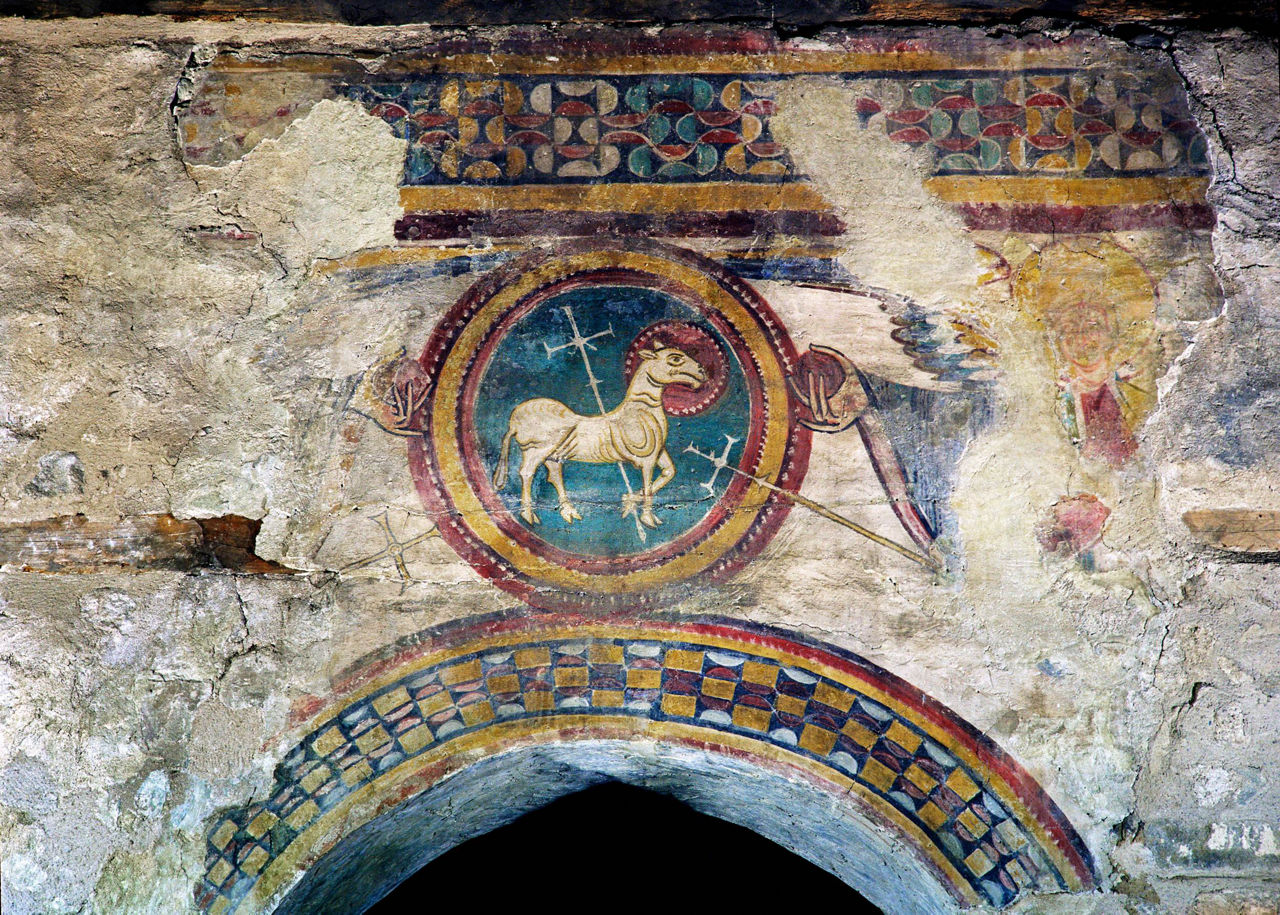The priest’s debt
What led the Monsignor of Nagol to take on a debt of five Barcelonan solidi (gold coins) in the year 1339? And to whom did he owe them? For now, these questions will remain unanswered, but one thing that’s certain is that the walls of Sant Serni de Nagol have many more stories to reveal.
A well-hidden Christ
Did you know that a Holy Christ statue was found buried in the earth below the nave in Sant Joan de Caselles? It appeared in the 1960s and, once it was put back together, it was established that it was originally located on the side wall of the nave, associated with twelfth-century murals. As you can see today, this is a unique display of Romanesque heritage that combines painting and sculpture.
Not all the paintings went travelling
Everybody has heard of the journey of the murals of Santa Coloma, which were transported all over Europe during one of the most tumultuous times in history. But did you know that there are still original twelfth-century paintings preserved within the church that were not sold with the rest of the murals because they were hidden behind the altarpiece?
The House of the Lord and the sheep
The Sant Miquel bell tower stands majestically over the valley containing Andorra la Vella and Escaldes-Engordany, but did you know that, back in 1898, local shepherds kept their flocks of sheep in the church?
Social afternoons
Did you know that, for many centuries, the churches of Andorra were the only public buildings in society? As such, they were not only used for worship, but also for anything else that involved the local residents, pastures, taxes, etc. The reversible pews attest to this fact.
Protection of the deceased
Outside this small church in the village of Pal, you can see an extremely old wrought iron grate. According to the story passed down by word of mouth, long ago, it was used to cover the recently buried dead in order to stop animals from digging into the soft earth.
Eighteenth-century censorship
In 1785, Bishop Garcia de Montenegro ordered that part of the murals that decorated the walls of Sant Romà de les Bons be censored: ‘Several paintings on the walls are to be erased because they are indecent.’
Our Lady of Meritxell 3.0
The Romanesque representation of the patron saint of Andorra was lost in a fire that consumed the church one September evening in 1972. In its place, you can now find a faithful replica made using 3D technology.
Renovations that last centuries
Churches are organic buildings that evolve over the years in the same way that society does. Andorra la Vella’s Sant Esteve Church is a living example of this process. Its semicircular apse tells the story of its Romanesque origins, but the appearance it bears today owes much to construction work done as part of Puig i Cadafalch’s renovations in 1940.
Not everything that seems Romanesque actually is
In Andorra, building methods changed little between the Romanesque period and the early twentieth century. It is not uncommon to find fairly modern churches that are easily confused with Romanesque churches, such as Santa Creu de Canillo. The most widespread myth is the one about Andorra’s Romanesque bridges. In fact, at the very earliest, these bridges (such as the iconic La Margineda bridge) would have been built at the end of the Middle Ages.

